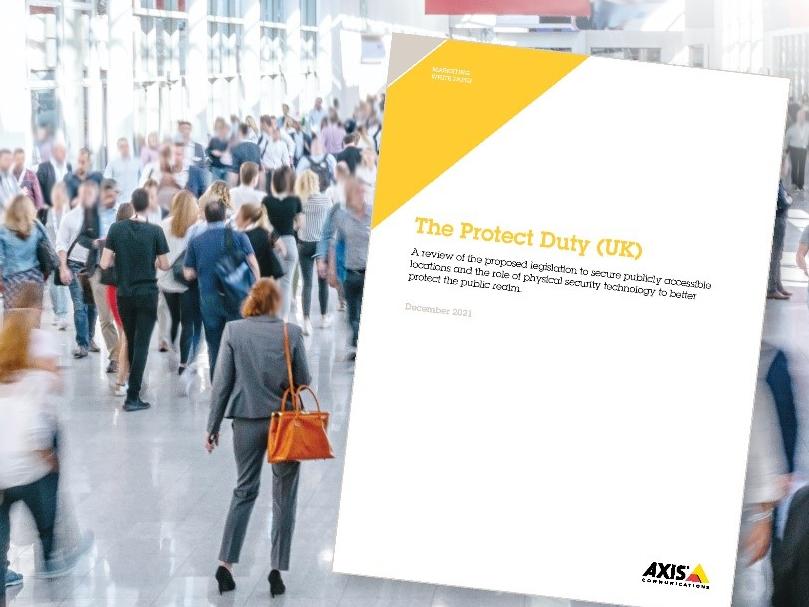
Brian Sims
Editor

Brian Sims
Editor
A NEW White Paper published by network video specialist Axis Communications offers a detailed review of the Government’s proposed Protect Duty legislation and highlights key considerations for the use of physical security technology to better safeguard publicly accessible locations in the UK.

The White Paper has been prepared to assist the security industry as the Government analyses feedback from the recent Protect Duty consultation that ran from 26 February through until 2 July 2021 and prepares to publish its response in due course in a Regulatory Impact Assessment.
Also known to many as ‘Martyn’s Law’, the Protect Duty refers to a new piece of proposed legislation which concerns the protective and preparatory measures that should be considered to make the public safer at publicly accessible locations. Currently, the owners of spaces such as stadiums, gyms, music venues and multi-use buildings with public realm areas have no obligation to act on advice from specialist counter-terrorism officers when it comes to reducing the risk of a terror attack.
The UK Government’s proposals on a new Protect Duty were set out in early 2021 and duly welcomed by many, not least Figen Murray (the mother of Martyn Hett, one of the 22 victims of the Manchester Arena attack) who has been a tireless campaigner for its introduction.
The proposals themselves are a major step towards improving security and preparedness at public places and will require owners and operators to carefully consider the range of potential threats relative to their business, and also take reasonable practical security measures – including the implementation of relevant technologies – to mitigate them.
Physical security systems
While physical security systems are not a central requirement of the Protect Duty, technology is a ‘force multiplier’ designed to improve operational efficiency, accelerate decision-making and demonstrate compliance.
With this in mind, the White Paper reviews the role of physical security technologies to help meet the requirements of the Protect Duty and assesses its potential application before an attack (in order to detect anomalous behaviours), during an attack (to monitor and control by dint of watching people and managing their movements such as guiding the public to safe zones) and post-attack (ie to review what has happened by way of incident analysis).
Steven Kenny, industry liaison for architecture and engineering at Axis Communications, commented: “Acts of terrorism have a devastating and far-reaching impact on all concerned. The Protect Duty looks set to spark a shift in the culture around publicly accessible events and will most certainly lead to a significant change in how they’re secured. In this White Paper, we review the proposed legislation and consider the role of physical security technologies to help meet its requirements. While we await the Government’s analysis of the consultation, it’s only right that all in the security industry take the time to reflect and consider what more can be done to help protect local places.”
Publicly accessible locations include a wide variety of everyday spaces and are defined as ‘any place to which the public or any section of the public has access, on payment or otherwise, as of right or by virtue of express or implied permission’. It’s anticipated that any new Protect Duty will be proportional and not unduly onerous for those within its scope.
Greater clarity
When considering physical security requirements, many existing security provisions are somewhat unco-ordinated and unregulated. This situation will need to be addressed with greater clarity around the responsibility of businesses to protect their spaces. There needs to be a drive towards the implementation of security technologies that meet the highest standards of protection.
*Download the Axis Communications White Paper on ‘The Protect Duty (UK)’ in order to learn more about the proposed legislation’s expected scope and compliance measures (including the use of physical security technology)
Dorset House
64 High Street
East Grinstead
RH19 3DE
UNITED KINGDOM
01342 31 4300